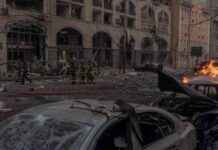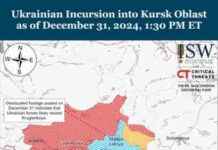Guide to Russian AI Drone Swarm Navigation: Current Progress and Challenges
Russian drones using artificial intelligence (AI) to outsmart electronic warfare (EW) defenses have made headlines. According to recent reports, Kyiv’s EU Ambassador Vsevolod Chentsov revealed that Russia is employing AI to enhance the capabilities of its Shahed drones, making them resistant to jamming attempts by adversaries.
What are Drone Swarms?
Drone swarms are a group of drones that work together seamlessly to accomplish a shared objective. These AI-powered drone swarms integrate advanced computer algorithms with local sensing and communication technologies to synchronize multiple drones towards a common goal. The US Government Accountability Office (GAO) defines AI drone swarms as drones capable of communicating with each other, understanding their coordinates, and autonomously reacting to changes.
A recent Breaking Defense article highlighted the discovery of a modem mesh module on Russian Gerbara drones, indicating early signs of decentralized wireless communication among drones. This advancement enables drones to reroute and maintain effectiveness within the swarm. Despite these developments, Russia still faces challenges in navigation and target recognition required for achieving AI drone swarms.
How Do Drones Navigate?
Drones rely on various guidance technologies like inertial navigation systems (INS), satellite triangulation, and visual or radar confirmation systems to navigate accurately. INS helps drones determine their position by tracking movements in three axes, compensating for external factors like wind and Earth’s rotation. However, without external updates, INS can accumulate errors leading to drift off course.
Satellite triangulation, such as the Global Positioning System (GPS), provides drones with external references to adjust their flight paths. GPS signals can be disrupted by jamming or spoofing, causing drones to lose track of their location. Visual or radar confirmation systems like DSMAC cross-reference terrain images with real-time camera data to pinpoint the drone’s location.
Do Drones Recognize Targets?
While drones like Shaheds primarily target coordinates, advancements in AI models allow drones to identify specific objects like energy infrastructure. By equipping drones with cameras and onboard processing chips, they can autonomously recognize and target objects like power stations. This upgrade poses a threat as drones can be trained to identify weak points in protective structures, enhancing their accuracy during missions.
At present, Russian drones lack true autonomous navigation capabilities to interpret surroundings and react accordingly. While advancements in autonomous targeting are evident, the drones still require improvements in navigation to reach their targets effectively. Collaboration with Western allies and the acquisition of AI technology highlight the importance of monitoring and restricting technology transfers to Russia to prevent the development of AI drone swarms.
As technology continues to evolve, the race for AI supremacy in drone warfare intensifies, underscoring the critical need for regulatory measures to prevent the proliferation of advanced military capabilities.

















